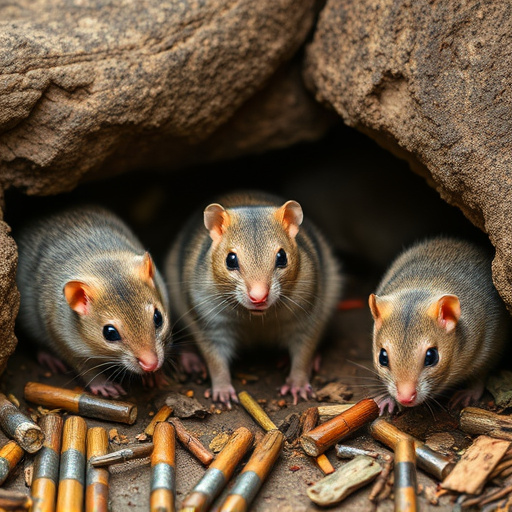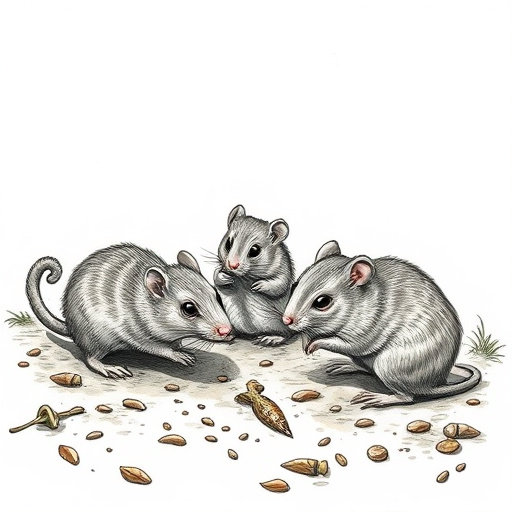Marana, Arizona's rodent biodiversity includes desert mice, kangaroo rats, squirrels, and various rat species, each with distinct behaviors influenced by habitat preferences like vegetation density, water availability, and shelter. Effective rodent control Tucson strategies require understanding these behaviors to implement tailored solutions considering diurnal/nocturnal patterns, food appetites, and entry points, minimizing environmental impact through proactive measures and professional interventions.
In the bustling landscape of Marana, Arizona, understanding rodent behavior is crucial for effective habitat management and local community protection. This article delves into the diverse world of rodent species inhabiting Marana, exploring critical habitat factors that shape their activities. We dissect distinct behavioral patterns, from diurnal to nocturnal tendencies, and uncover food preferences that drive their movements. Additionally, we provide insightful strategies for rodent control in Tucson, empowering residents with effective management tools to mitigate potential pests.
- Rodent Species in Marana: A Diversity Overview
- Habitat Factors Shaping Their Behavior
- Behavioral Patterns: Diurnal and Nocturnal Differences
- Food Preferences: What Attracts These Rodents?
- Control Strategies: Effective Rodent Management in Tucson
Rodent Species in Marana: A Diversity Overview

Marana, a vibrant community nestled in Pima County, Arizona, boasts a diverse ecosystem that supports an array of rodent species. Among the most common are the desert mice, including the Peromyscus (white-footed mouse) and Calosspisa (deer mouse), known for their adaptability to both urban and rural environments. Additionally, the region is home to the larger kangaroo rats, such as the Dipodomys (desert kangaroo rat), which have specialized adaptations for arid conditions. These species contribute to the complex web of life in Marana, requiring unique approaches to rodent control Tucson methods that respect their ecological roles while addressing potential pests.
The diversity extends further with the presence of ground squirrels like the Spermophilus (ground squirrel) and various species of rats, some of which are year-round residents while others are transient visitors. This variety necessitates a nuanced understanding of local rodent behavior, habitat preferences, and seasonal migrations for effective management strategies. By recognizing the specific needs and characteristics of these diverse rodent populations, Marana residents and pest control professionals can implement sustainable rodent control Tucson solutions that maintain ecological balance.
Habitat Factors Shaping Their Behavior

In Marana, rodents’ behavior and habitat preferences are intricately tied to the region’s diverse ecological landscape. Habitat factors such as vegetation density, water availability, and shelter play a significant role in shaping their activities. For instance, areas with lush greenery provide ample cover and food sources, encouraging more visible and active rodent populations. Conversely, sparse vegetation might drive them to seek alternative shelters like man-made structures or burrows beneath buildings, which is particularly relevant for those seeking effective rodent control Tucson solutions.
Moreover, water bodies, both natural and artificial, can act as hubs of activity, attracting rodents for drinking and bathing. Understanding these habitat preferences is crucial for implementing tailored rodent control measures in Marana’s varied environments, ensuring the safety and well-being of both residents and local ecosystems.
Behavioral Patterns: Diurnal and Nocturnal Differences

In Marana, as in many environments, rodents exhibit distinct behavioral patterns that are influenced by their natural tendencies and habitat conditions. One of the most intriguing aspects is their diurnal and nocturnal dichotomy. Rodents active during the day, often referred to as diurnals, tend to be more visible and vulnerable to potential predators, but they benefit from better access to food sources. Conversely, nocturnally active species, or nocturnals, operate under the cover of darkness, avoiding direct sunlight and the heat it brings. This behavioral division significantly impacts their habitat preferences; diurnal rodents often inhabit open areas with easy access to food and shelter, while nocturnals favor dense vegetation and hidden burrows.
Understanding these differences is crucial for effective rodent control strategies in Tucson. For instance, diurnal rodents might be more susceptible to traps placed near food sources during the day, whereas nocturnals may require more stealthy and targeted approaches. This knowledge empowers local residents and pest management professionals to implement tailored solutions, ensuring the success of rodent control efforts while minimizing environmental impact.
Food Preferences: What Attracts These Rodents?

Rodents, a common pest in Marana and throughout Tucson, are driven by their insatiable appetites and distinct food preferences. Their dietary choices vary depending on species but often include a mix of seeds, grains, fruits, vegetables, and even small insects or birds’ eggs. In residential areas, access to human food sources like garbage, pet food, and bird feeders can significantly attract rodents, leading to increased rodent control needs in Tucson.
Certain scents and textures also play a role in luring these creatures. Strong smells of food waste or remnants of meals left behind can trigger their curiosity. Similarly, rough textures like bark or wood shavings might entice them to build nests or shelters. Understanding these food preferences is crucial for effective rodent control strategies in Marana homes and businesses.
Control Strategies: Effective Rodent Management in Tucson

In Marana and throughout Tucson, effective rodent control requires a comprehensive understanding of local habitat preferences and behavioral patterns. Rodents like squirrels and rats are adept at adapting to urban environments, seeking shelter in buildings, trees, and lush landscapes found in many Tucson neighborhoods. To manage these populations effectively, homeowners and property managers should focus on prevention strategies such as sealing entry points, maintaining landscape trim, and storing items securely.
Regular inspections and prompt response to signs of infestation are crucial. When necessary, professional rodent control services offer safe and humane solutions, utilizing targeted treatments and specialized equipment to eliminate rodents while minimizing environmental impact. By combining proactive measures with expert interventions, residents can ensure their properties remain free from these persistent pests, maintaining a peaceful coexistence in the Tucson landscape.
Understanding the complex behaviors and habitat preferences of rodents in Marana is crucial for effective rodent control strategies, especially in nearby Tucson. By recognizing the diverse species present, their environmental cues, and food attractions, we can implement tailored management plans. The insights gained from this analysis empower residents and professionals alike to navigate rodent challenges in a way that respects both ecological balance and human needs, ultimately leading to more successful rodent control in Tucson and similar environments.
